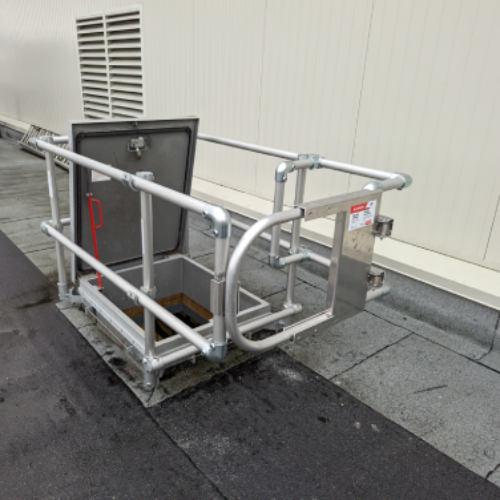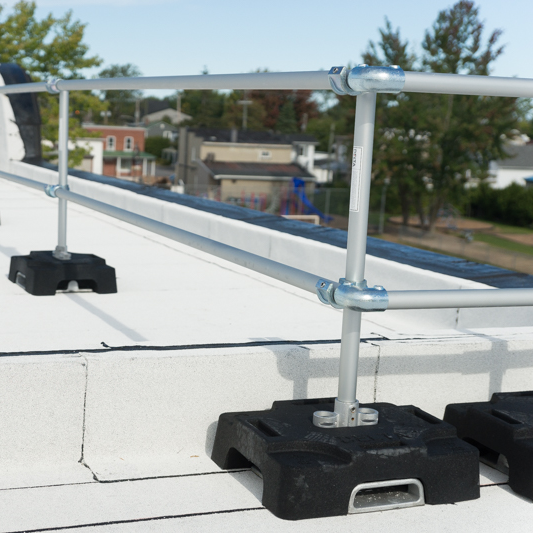Security: From cards to cell phones
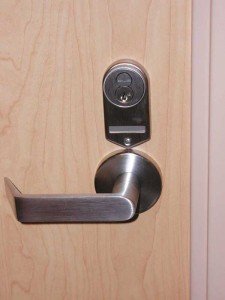
It can provide access to the areas of the facility to which the employee is authorized, including the biometrically secured data centre, as well as access to many other organization applications, from the cafeteria to the parking lot.
This adds to employee productivity by simplifying procedures and also helps the facility become more secure. The same would be true if the employee was a student, a doctor, a government staffer, or worked in the typical office building.
Speaking of biometrics…
Biometrics enable a facility manager to ensure only verified users have access to a facility at authorized times. The technology provides the highest level of assurance the actual authorized individual—rather than just whoever has the authorized key, card, or code—has access to a secure facility.
Biometrics systems are easy to include in existing construction. Replacing card readers, in many cases, is simply a quick unplug/plug-and-play operation. Biometrics gets people into buildings and rooms quickly and can include several options, such as letting an employee quickly check accrued vacation time with the simple touch of one of the unit’s programmable buttons. Additionally, it is easy to control threshold levels, tightening access control in a nuclear power plant while loosening the level at a spa.
Around the world, biometric readers are in use, thanks to their unparalleled reliability and convenience. After the initial user-friendly enrolment process, identity verification takes less than one second, making it ideal for high-traffic applications. Further, the durable, low-maintenance design of most readers means low total cost of ownership.
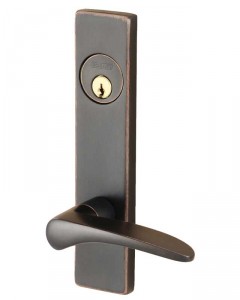
A biometric reader can be used as a standalone device that protects a single critical access point or integrated into virtually any new or existing access control system in the market. Administrators can customize security levels, time zones, holidays, and languages based on their organization’s unique needs. With respect to peace of mind, no fingerprints or palm prints are stored in the system and the user does not leave any trace of his biometric data behind.
Optional template management software lets readers form a system that:
- communicates alarms and transactions in real-time;
- creates activity reports;
- enables supervised onsite or remote user enrollment; and
- allows administrators to set temporary access privileges.
Units will work perfectly, even in harsh conditions. They are used in applications in which it is important to verify that you are you, not what you carry. This is important in Canadian projects from across the security spectrum.
For longer than a decade, Hydro-Québec’s Gentilly-2 nuclear generating station (located near Bécancour, Que.) has enforced security, physically restricted non-qualified, non-trained personnel from hazardous zones, and implemented a log of personnel and visitors’ comings and goings with hand-geometry readers.
In Alberta, Spa Lady fitness centres also make use of similar systems. Opting for biometric readers for ease of convenience, the chain has reduced fraud and made entry to its ladies-only facilities easy by deploying the same units, alleviating its customers of having to carry loyalty cards.
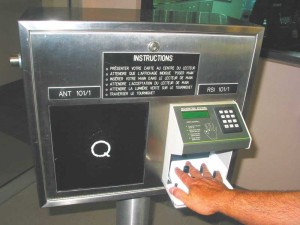
The role of early adopters
Each new credential—proximity, smart card, and biometric reader—came into the mainstream by being more convenient than the most used previous credential without sacrificing security. After all, getting close to a proximity reader is easier than swiping a magnetic stripe card, and it is more secure. Smart cards provide more applications, such as cashless vending in addition to increased access control security. Biometrics is certainly easier to use and more secure than smart cards.
It may seem like each new credential brings resistance from an older crowd who does not want to change what they are using. However, new security solutions are often already familiar to those graduating from school and entering the work force. Many of those in the under-30 crowd are already used to one-card solutions, having smart cards and biometrics part of their regular university life. As convenience is one of the ultimate student goals, effective safety and security on campus must be unobtrusive and transparent to gain student acceptance. Cards are viewed as the essential enablers to their lives.
Viewing Canada’s young people as early adopters helps forecast future trends in security and egress control. Nearly half of all students identify their cell phones as their favourite personal electronic device. Indeed, a recent North American survey shows 91 per cent of all mobile users keep their phone within arm’s length day and night. Already, nearly half of all students are using cell phone applications. When it comes to credentials, two-thirds are interested in using their phone in place of an ID card. The rationale is many feel they are less likely to lose their phone than an ID card. Further, many say they know ID cards are shared, whereas phones are not.
Thus, there are a great number of early adopters in the user population that are already ‘sold’ on cell phones being a credential—just like they were sold on the use of smart cards and biometrics previously. This, of course, ties in nicely with the budding discussion of the emerging technology of near-field communication (NFC), which will inevitably end up on cell phones. It is widely expected only cell phones will eventually be needed for cashless payments or to show identity.
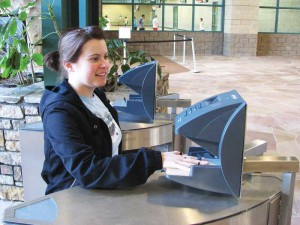
Could putting a smart phone antenna and chip in a phone replace a smart card? It is a matter of semantics—the smart card would be in the cell phone. For those who worry about batteries running out or the Internet dropping, the smart card technology eliminates such fears. A contactless smart card does not need power or the Internet. As long as cell phone providers will let the technology work as it can, the two biggest concerns could already be alleviated.
Using cell phones as credentials is not a far-fetched idea at all—Canadians have already gone far down the cell phone trail, using it beyond simply having conversations. When a person is not home, he or she can monitor the house through Web-enabled computers or smartphones. It is possible to check the status of door locks, grant entry, and turn off the lights. One can receive text or e-mail notifications when family members access the lock, as well as conserve energy by remotely controlling the thermostat. Some contractors are already creating the infrastructure for such services in new home construction.
Understanding NFC
In basic terms, near-field communication provides simplified transactions, data exchange, and wireless connections between two devices in close proximity to each other, usually by no more than a few centimetres. It is expected to become a widely used system for making payments by smartphone in North America. Many smartphones currently on the market already contain embedded NFC chips that can send encrypted data a short distance to a reader located, for instance, next to a retail cash register.
Those shoppers who have their credit card information stored in their NFC smartphones can pay for purchases by waving their smartphones near or tapping them on the reader, rather than bothering with their actual credit card. Co-invented by NXP Semiconductors and Sony in 2002, NFC technology is being added to a growing number of mobile handsets to enable mobile payments as well as many other applications.
A smartphone or tablet with an NFC chip could also serve as a keycard or ID card. NFC devices can read NFC tags on a museum or retail display to get more information or an audio or video presentation. NFC can also share a contact, photo, song, application, or video, as well as pair Bluetooth devices.
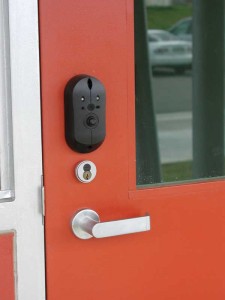
Emerging technology demonstrations of such ‘mobile keys’ at the 2011 ASIS International (formerly American Society for Industrial Security) Conference in Orlando this past September show the possibility of things to come from an access control standpoint. Attendees saw a smartphone being used just like a smart card (or proximity card), placed next to the reader and open a locked door. Since ASIS, there has been great interest in this future credential by those watching YouTube videos of demonstrations and interacting with other social media outlets.
Mobile keys use NFC technology within smart phones to emulate smart credentials, allowing use of a mobile phone for entry to secure areas. This functionality relies on phones produced with an NFC chip included (or a specific accessory case including this circuitry). Currently, there are very few phones produced with an NFC chip (or specific accessory case) included, but availability of these phones—and their infrastructure—should increase dramatically over the next couple of years. Many end-users are excited about this new technology and its future use in the marketplace. With this said, it is important to understand the solution is still in the testing phase and not yet ready for mass commercialization. As was the case for smart cards and biometrics, the early adaptors for this technology will be on college campuses, ready to bring the technology to the commercial market along with themselves and their degrees.
Conclusion
To determine the credential needed to be used on a specific building, the facility owner should be able to describe to the project team what types of protection will be wanted at each ingress/egress point. For example, what is the environment in which this credential will work? With this quick overview, architects and specifiers can determine which credential will work best.
If such information is not available (for example, perhaps the building is being constructed without knowing who the owner might be), it is best to have all security system specifications written to industry or open standards. When in doubt, the project’s security consultant or integrator can help.
Raj Venkat is the vice-president of marketing at Ingersoll Rand Security Technologies. Previously, he was senior director of worldwide segment marketing for McAfee, where he focused on the mid-market customer segment, leading the launch and evangelism of security solutions. Venkat’s experience also includes solutions marketing, management consulting, business development, and engineering roles with Brio Software, PriceWaterhouseCoopers, and URS Corporation. He can be reached via e-mail at rvenkat@irco.com.



